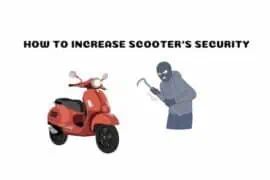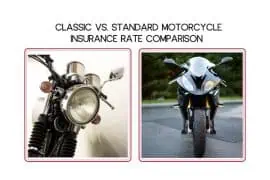A motorcycle equipped with anti-lock brakes (ABS) can help riders stop quickly and fully without fear of having the wheels lock up. It delivers a way to suddenly eliminated forward momentum while maintaining control in the saddle.
This technology reduces fatality crashes by an average of 20% annually compared to motorcycles without ABS. Its pulsing method to create stopping power also reduces the time and distance necessary to come to a complete stop.
Didn't You Try Our Quote Comparison Tool Yet? Save BIG by Doing it!
ABS is required on all European motorcycles, but it is considered an optional feature in the United States. As this safety feature becomes more popular, bike manufacturers have started making it standard on more models in the US and available as an optional upgrade.
Table of Content
Can I Save Enough on Motorcycle Insurance to Have ABS Pay for Itself?
Anti-lock brakes make a motorcycle slightly more expensive, especially when shopping for a new model. Only a handful of models from Harley-Davidson, Honda, Indian, and Kawasaki offer this safety feature as an optional component.
Most new motorcycles bring ABS as a standard feature on all bikes.
Bikes with ABS vs. without ABS: cost comparison
The Kawasaki Ninja 650 is an excellent example of the minimal cost additions that ABS technology brings to a modern motorcycle. You can purchase the 2023 base model for $7,999, while the base ABS model retails for $8,599.
Most insurance policies are 5% to 15% cheaper when requesting a quote for a bike with ABS than those without this safety feature.
If you pay $600 per year for motorcycle insurance, a 10% savings translates to $60. In ten years, you would make up the cost of adding ABS to your bike.
For riders paying $1,200 per year for motorcycle insurance, a 10% cost reduction for ABS features would pay for itself in five years.
What About Adding Aftermarket ABS?
It is possible to add an aftermarket anti-lock braking system to older motorcycles. Although the safety feature improves the bike’s handling, the modification cost is prohibitive for most makes and models.
When taking the aftermarket approach, you can expect to pay about $4,000 for a basic L. The price can be significantly more if you want to add an advanced system to a vintage or classic model.
How Much Safer is a Motorcycle Equipped with ABS?
The safest decision you can make when riding a motorcycle is to wear a helmet. When riders take this step, they reduce their risk of experiencing a life-threatening event on the road by 37%.
Some studies place ABS-equipped motorcycles into a similar category of safety effectiveness. Recent reviews of research into this feature show that bikes with anti-lock brakes are over 20% less likely to be involved in a fatal accident.
Some research shows that the effectiveness of ABS is above 30%, which makes it comparable to a helmet’s ability to save lives.
What Are the Pros and Cons of Using ABS on a Motorcycle?
Before purchasing a motorcycle, it helps to review its safety features to ensure you’re comfortable with the riding experience. With ABS still an optional choice on several models, it helps to review the advantages and disadvantages this technology brings to the riding experience.
| PROS | CONS |
|---|---|
| Anti-lock brakes stop the wheels from locking when you have an immediate braking incident. This feature reduces the risks of traction loss on slick surfaces while offering more control over the experience. | The anti-lock braking system on a motorcycle isn’t guaranteed to work during every possible circumstance. It is less effective on sand or gravel since the surfaces need to be clarified for the technology. |
| ABS reduces the braking distance required to come to a complete stop during an emergency. This trait keeps motorcycles with this feature out of more potential accidents. | Some motorcyclists find the vibration and noise of ABS systems unusual or bothersome. The pulsing the feature creates during a hard stop could be unexpected enough to cause some bikers to lose control. |
| Most motorcycles with ABS have extra traction control because the features share the same hardware during the building process at the factory. | Bikes equipped with ABS technology need more maintenance than those without it. This system works with a series of sensors that eventually need attention to keep working correctly. |
| Bikes equipped with ABS typically have a higher resale value than those without this safety feature. | The anti-lock brakes can work as expected, and a life-threatening accident or laydown can still occur. |
Unless you add aftermarket ABS to an existing bike, the motorcycle insurance savings you receive typically pay for this feature over its lifetime. Each insurer is different, so request a personalized quote if you consider upgrading.
Use This Tool for Free and Save on Quotes!





